Portal, AZ - Rodeo, NM
Serving The Communities Of Portal and Rodeo (www.portal-rodeo.com)
Serving The Communities Of Portal and Rodeo (www.portal-rodeo.com)

Southwestern Research Station
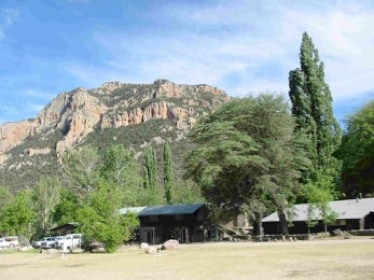
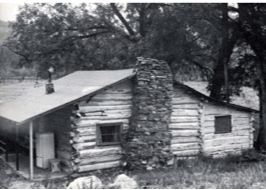
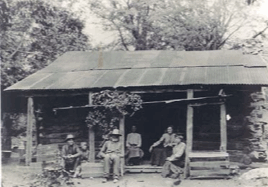
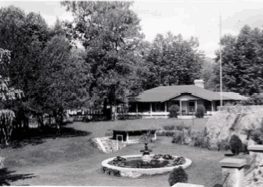
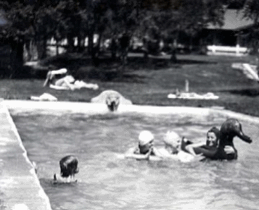
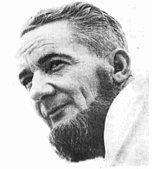

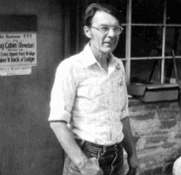


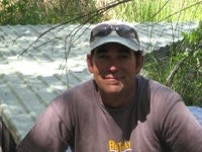
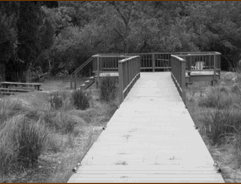
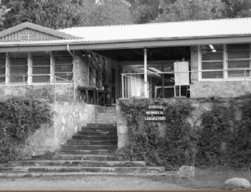
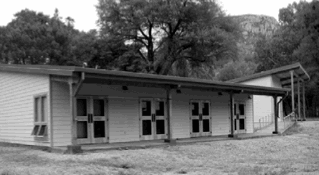
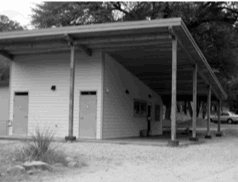
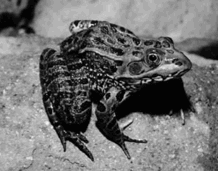
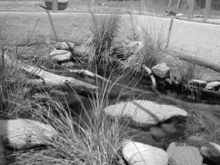
Artificial Pond For Leopard Frogs
1915
The Reed House on the Reed Ranch
L to R: Walter Reed, unknown, Stephen Reed, next three unknown
The Reed Ranch was sold to E. John Hands by Walter S. Reed on July 12 and recorded September 24.
1919
E. John Hands renamed the Reed Ranch the “Bide-a-wee Ranch”. He built four small cottages, possibly as vacation rentals.
1921
E. John Hands sold the Bide-a-wee Ranch to Frank W. Officer on January 18. Officer with his partner, H. G. Grosman, had plans to develop the Bide-a-wee as a resort or a dude ranch.
1926
Frank Officer and his partner ran into financial troubles and had to sell the ranch to Harry A. and Emma M. Clark on March 8. Before selling Frank was able to build rock walls along the creeks, start construction of the framed main house, and built a rock foundation for what is now the station’s laboratory building. In the next several years, Harry and Emma with the help of friends finished construction of the framed main house that included a native stone fireplace (still functional in SWRS Main House). They also built a spring house on the lawn of the main house, a fountain, and a concrete swimming pool. The pool was, and still is, fed by a warm spring which flows at a constant 72 degrees.
1939
Harry Clark died in 1938 and left the ranch to Emma. Later that year the property was sold to Jerome A. and Katherine Clark.
1943
Jerome died after being struck by lightning and left the property to Katherine Clark. She then sold the ranch to Jack Hoggett of Rodeo, NM but Hogget was unable to make payment and Katherine transferred the ranch back to Emma Clark.
1946
Emma Clark sold the ranch for $23,500 on January 2 to Susan McAndrews. Susan intended to operate the property as a dude ranch which she renamed the “Painted Canyon Ranch”. It is believed that Susan plumbed the Main House in addition to wiring the structure. She laid foundations for two guest quarters.
1950
On October 24 Susan Andrews sold 53 acres of the Painted Canyon Ranch to Weldon F. and Phyllis W. Heald. The sale included all the buildings and the swimming pool. Susan retained 87.47 acres of the ranch property. Weldon was an avid hiker and Director of the Sierra Club from 1945-1949. He was also a widely published free-lance author (see 1967 below).
1953
Sometime in 1953 or 54, the Healds had a visitor at the ranch. He introduced himself as Dr. Mont Cazier, the Chairman of the Department of Insects and Spiders at the American Museum of Natural History in New York. He wanted to know if the place was for sale. Dr. Cazier thought the property would be a great site for a biological field station for the AMNH. He envisioned scientific studies in all fields of natural history being conducted in this location of high species diversity. At first, the Heald’s said NO to the offer – they loved the area and did not want to sell. However, they were both free-lance writers and felt out of touch with the business world and decided to sell their ranch.
1955
On 7 June the Heald’s sold their 53 acres of the ranch to the American Museum of Natural History (AMNH) in New York. Funding for the property was donated by David Rockefeller ($50,000 plus $3,000 for furnishings). The Southwestern Research Station was established under its first Director, Dr. Mont A. Cazier.
1956
On May 14, the AMNH purchased an additional 10.7 acres from Susan McAndrews which increased the holdings to 63 acres. The foundation constructed by Harry Clark was converted to research labs for scientists staying at the station and eventually named the Osborn Memorial Laboratory. Housing units 5-7 were completed (Rockefeller and other funding).
1957
A wing was added to the laboratories through the generosity of Dr. David Rockefeller and Dr. Albert E. Parr. Mr. Herbert F. Schwartz, and Mr. Bernard Heineman funded enlargement of the dining room.
1958
The rock barn was rebuilt for bachelor quarters (currently housing unit #14).
1959
Susan McAndrews Bonnet sold Frank Preston of Butler, PA 36.5 acres at $200 per acre on May 20
1959
Housing units 8-13 were built (National Science Foundation funding).
1962
Dr. Mont A. Cazier resigned as Director and was replaced temporarily by Dr. Willis J. Gertsch and Dr. Jerome Rozen in 1962. Vincent D. Roth was appointed Director on September 1.
1967
Previous owner of station when it was called the Painted Canyon Ranch, Weldon Heald, published a book called the Sky Islands which portrayed the Chiricahua Mountains and the Painted Canyon Ranch.
1977
Frank Preston donated his 36.5 acres to the AMNH’s Southwestern Research Station increasing the holdings to 99.42 acres.
1985
Dr. Wade C. Sherbrooke arrived as Assistant Director on May 23.
1986
March 1- Vincent D. Roth retired and Wade C. Sherbrooke was appointed Director.
1991
A new laboratory, the Technical Equipment Laboratory, was built near the Osborn Memorial Labs and is equipped with chemical hoods, incubation chambers, balances, centrifuges and other modern equipment used by researchers that visit the station (National Science Foundation /American Museum of Natural History funded)
1993
Storage sheds for researchers were assembled (American Museum of Natural History Funded).
1996
An Animal Behavior Observatory was constructed for researchers conducting behavioral studies (National Science Foundation/American Museum of Natural History funded); A Live Animal Holding Facility (LAHF) was constructed that has four climate controlled rooms and outside screened rooms. A Library/Collections room was added to the Osborn Memorial Laboratory, and renovations for a Computer Room and a Director’s office (National Science Foundation/American Museum of Natural History funded).
1997
Completion of winterized housing duplex, units 15 and 16 (National Science Foundation/American Museum of Natural History funded)
2000
The Main House renovation was complete. This structure includes a dining room, kitchen, conference room, linen and laundry room (National Science Foundation /American Museum of Natural History funded).
2003
Dr. Wade P. Sherbrooke retires as Director and Dr. Dawn S. Wilson is appointed Director.
2006
The aging wastewater treatment system at the station was replaced with a subsurface constructed wetland. The new wetland is an environmentally friendly alternative to traditional leach lines that can potentially pollute our precious water
table. The wetland not only handles all wastewater at the station, but provides habitat for wildlife – especially birds and butterflies (Private Donations/American Museum of Natural History funded).
2007
Osborn Memorial Laboratories, originally built in 1956, were remodeled. The remodel included use of environmentally sustainable materials and energy efficient lighting and windows (National Science Foundation funding).
2008
Received funding from donor (David Rockefeller) to aid in the construction of new dormitories and open an endowment for the station
2009
A New Education Building and Gift Shop were built. The Education building increased the station’s ability to offer more workshops and classes and was constructed using “green” technology: cotton batts (recycled blue jean material) used for insulation, double-paned windows, energy efficient heating, cooling, and lighting, and eco-friendly building materials for siding and roof. Sales from the gift shop help support the operation of the station (Private Donation/National Science Foundation funding).
2010
The station partnered with US Fish and Wildlife and Arizona Game and Fish agencies to reintroduce the federally threatened Chiricahua
Leopard Frog, Lithobates (Rana) chiricahuensis back into the eastern portion of the Chiricahua Mountains. The station constructed a headstarting facility for rearing eggs and tadpoles to juvenile frog size for release into the wild (USFWS and AGFD funding).